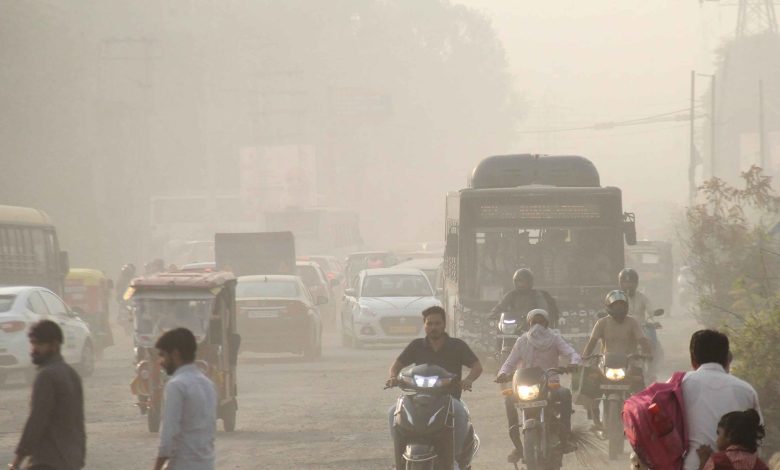Air Quality in Ambazari Hits Poor Zone: What Nagpur Residents Should Know

Nagpur Air Quality | AQI Ambazari: As urban centers grow, air quality becomes a critical concern. Recently, Nagpur’s Ambazari area has seen a concerning dip in air quality, registering an Air Quality Index (AQI) of 209. This places the area’s air quality in the “poor” category, posing potential health risks to residents. In this article, we’ll discuss the factors behind this decline, the impact of high particulate levels, and practical steps for mitigating exposure.
Understanding AQI: What Does It Mean for Nagpur?
The Air Quality Index (AQI) is a numerical scale used to indicate the level of pollution in the air. It helps individuals understand the risk of exposure based on real-time air quality data. Here’s how Nagpur’s recent AQI numbers break down:
- Ambazari: AQI 209 (Poor)
- Mahal: AQI 125 (Moderate)
- Civil Lines: AQI 103 (Moderate)
- Ram Nagar: AQI 136 (Moderate)
While other areas remain within moderate levels, Ambazari has shifted into a category with health implications, especially for vulnerable groups.
Why Has Ambazari’s AQI Reached Dangerous Levels?
1. Seasonal Temperature Drop
As winter approaches, cooler air traps pollutants closer to the ground, resulting in higher concentrations of harmful particles.
2. Open Burning of Waste
An increase in the open burning of waste, including yard and plastic waste, adds substantial amounts of particulate matter (PM2.5 and PM10) to the air, which are primary contributors to the AQI spike.
3. Traffic and Industrial Emissions
Urban traffic congestion and industrial emissions add to the mix, particularly in densely populated or commercial areas like Ambazari.
Breaking Down the Pollutants: PM2.5 and PM10 (Nagpur Air Quality)
PM2.5 and PM10 are the primary pollutants affecting air quality in Ambazari. Here’s a closer look:
- PM2.5: Fine particles with a diameter of less than 2.5 micrometers, which can deeply penetrate the respiratory system.
- PM10: Slightly larger particles that, although less invasive than PM2.5, still pose serious health risks.
Health Implications of Poor Air Quality
Poor air quality can lead to a range of health problems, including respiratory issues, aggravated asthma, and cardiovascular disease. For sensitive individuals, exposure to high AQI levels may cause immediate symptoms such as:
- Shortness of Breath
- Irritation in Eyes, Nose, and Throat
- Coughing and Wheezing
Who is Most Affected by the Poor Air Quality?
1. Children and the Elderly
Young children and elderly individuals are highly susceptible to the effects of poor air quality. Their respiratory systems are either not fully developed or may have weakened defenses.
2. People with Pre-existing Conditions
Individuals with conditions like asthma or cardiovascular disease face heightened risks during high AQI periods.
3. Outdoor Workers
Those who work outdoors, including street vendors and construction workers, are at increased risk of prolonged exposure.
Comparative AQI Data Across Nagpur
- Ambazari: AQI 209 (Poor) | PM2.5: 329 | PM10: 401
- Mahal: AQI 125 (Moderate) | PM2.5: 287 | PM10: 325
- Civil Lines: AQI 103 (Moderate) | PM2.5: 199 | PM10: 250
- Ram Nagar: AQI 136 (Moderate) | PM2.5: 251 | PM10: 297
Government and Community Measures to Improve Air Quality
1. Regulating Open Waste Burning
Local authorities can implement stricter measures to prevent open burning of waste by raising awareness and providing alternative disposal options.
2. Increasing Green Cover
Trees absorb CO2 and other pollutants, acting as natural air purifiers. Increasing green cover around Ambazari and other high-pollution areas could improve air quality.
3. Reducing Vehicle Emissions
Promoting public transport, carpooling, and electric vehicles can significantly cut down vehicle emissions, a major contributor to AQI in urban centers.
Personal Steps to Reduce Exposure
1. Use Air Purifiers Indoors
Indoor air purifiers with HEPA filters can reduce PM2.5 and PM10 levels inside homes, providing a cleaner environment.
2. Wear Masks Outdoors
Masks can help reduce inhalation of fine particles, especially for those who must spend time outdoors in high AQI areas.
3. Avoid Outdoor Exercise
During high AQI periods, it’s best to avoid strenuous outdoor activities that could increase pollutant inhalation.
Nagpur, like many other growing cities, faces air quality challenges as urbanization and industrial activities increase. Ambazari’s recent AQI readings serve as a reminder of the importance of environmental responsibility and the need for both government and community action. By taking preventive steps and supporting policies aimed at reducing air pollution, residents can contribute to a healthier, more sustainable Nagpur.
1. What are the main causes of poor air quality in Ambazari? The primary causes include open waste burning, vehicular emissions, and seasonal temperature drops that trap pollutants closer to the ground.
2. How can I protect myself from poor air quality? Using air purifiers, wearing masks, and staying indoors during high AQI periods can help reduce exposure to pollutants.
3. What are PM2.5 and PM10, and why are they harmful? PM2.5 and PM10 are fine particles that, when inhaled, can penetrate deep into the lungs and bloodstream, causing health issues.
4. How does air pollution affect children and the elderly? Children and the elderly are more susceptible to respiratory issues, asthma attacks, and cardiovascular problems due to weaker immune and respiratory systems.
5. What steps can the government take to improve air quality? Measures like regulating open waste burning, promoting electric vehicles, and increasing urban green spaces can contribute to better air quality.










